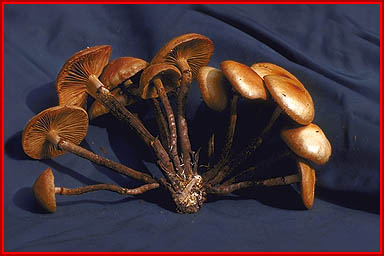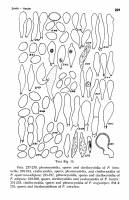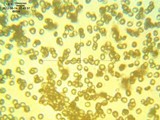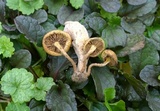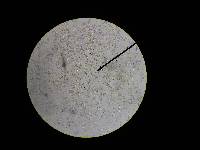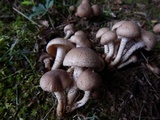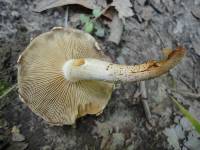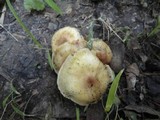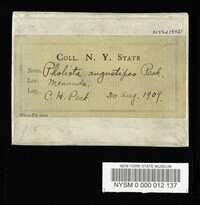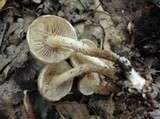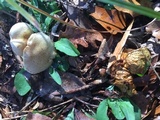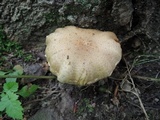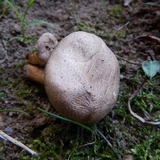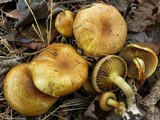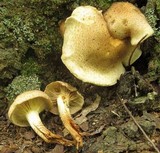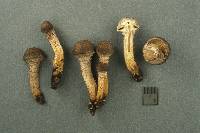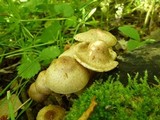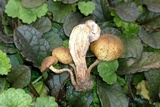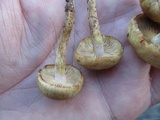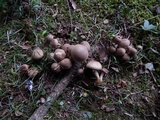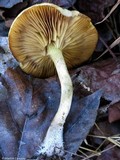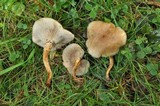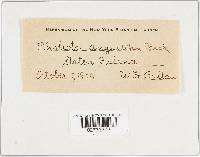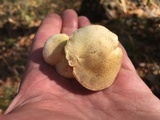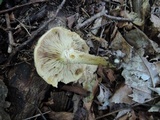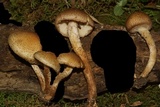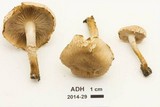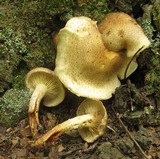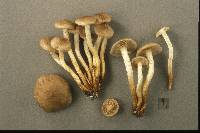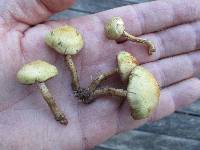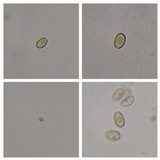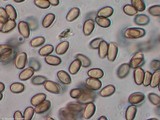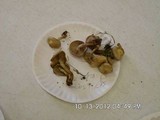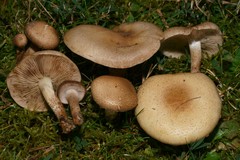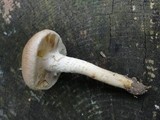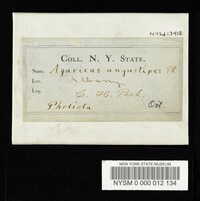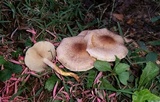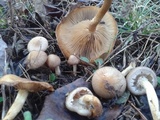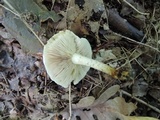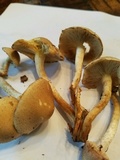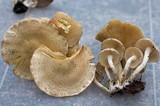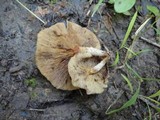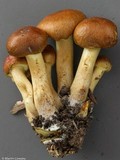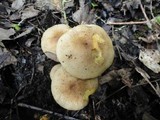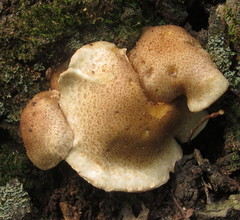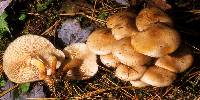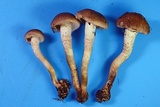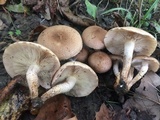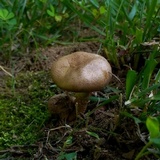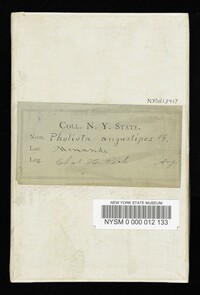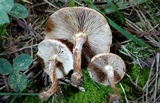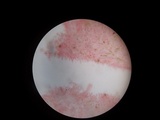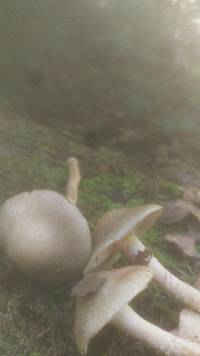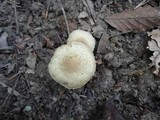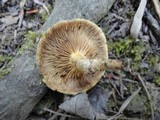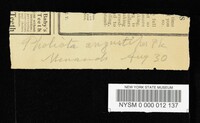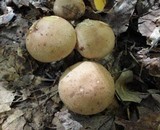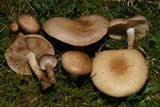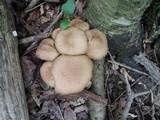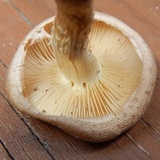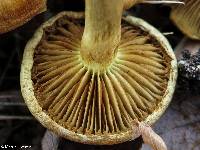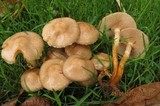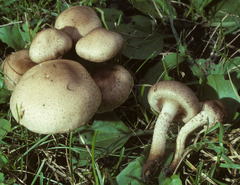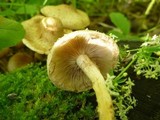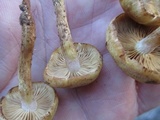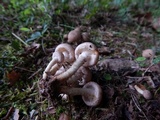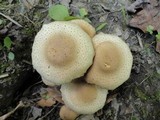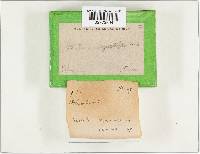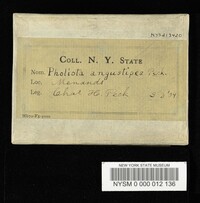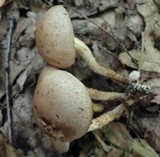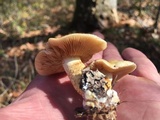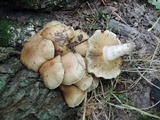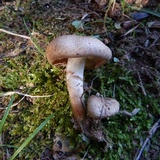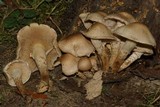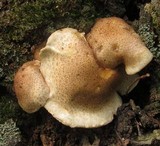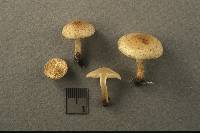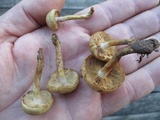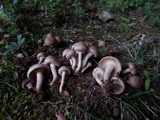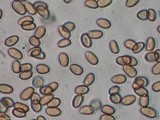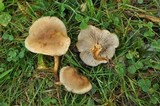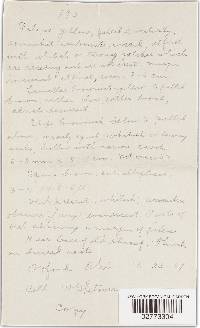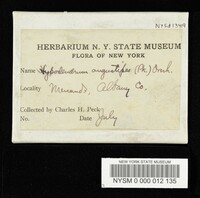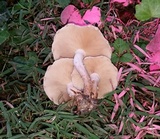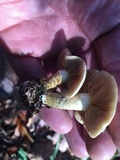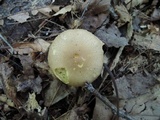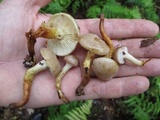
|
|
|
|
Family: Strophariaceae
|
Smith, AH & LR Hesler (1968) The North American Species of Pholiota. Hafner Publishing Company: New York, NY. 117. Pholiota angustipes (Pk.) Saccardo, Syll. Fung. 5: 740. 1887. Agaricus (Pholiota) angustipes Peck, New York State Mus. Ann. Rept. 30: 40. 1878. Hypodendrum angustipes (Pk.) Overholts, North Amer. Fl. 10: 280. 1932. Illustrations: Harper, Wisc. Acad. Sci. Arts & Letters 17, p. 34. Text figs. 251-253. Pileus 2-8 cm broad, hemispheric then convex or nearly plane, at first brown, then fading to ochraceous brown or subalutaceous, drying to tawny, squamulose with minute dotlike appressed scales, only slightly viscid when wet. Context fleshy thin, yellowish or whitish; taste unpleasant. Lamellae adnate, sinuate-adnate or subdecurrent, whitish or dull cream-color, becoming tawny or cinnamon-buff, in dried basidiocarps cinnamon, close, narrowed outward, medium broad at stipe. Stipe 3-7.5 cm long, 4-10 mm thick, white to grayish or avellaneous, slightly squamulose, the scales darker or fibrillose, equal or tapering downward, stuffed or hollow. Veil fibrillose, buff whitish, forming an evanescent annulus. Spores 6-7.5 x 4-4.5 µ, smooth, germ pore at apex distinct; shape in face view elliptic, in profile subelliptic to obscurely bean-shaped; color in KOH ochraceous to pale clay color, in Melzer's reagent paler ochraceous; wall thin (-0.25 µ). Basidia 4-spored, 18-24 x 5-6 µ, clavate, hyaline in KOH and nearly so in Melzer's reagent. Pleurocystidia scattered 16-30 x 5-8 µ, fusoid to clavate or filamentous, content in some golden yellow in KOH (possibly pseudocystidia), some (mostly the fusoid cells) with wrinkled refractive content extending the length of the cell. Cheilocystidia versiform: some in chains and the cells 2-3 in number, 6-9 µ diam. and about as long; some pear-shaped and 26-32 x 9-12 µ; some fusoid ventricose with acute apex; nearly all with thin hyaline walls, content hyaline or in a few bright yellow (in KOH). Caulocystidia at extreme apex of stipe and resembling the cheilocystidia but often larger, some with yellow content, 30-50 (67) x 4-9 µ. Gill trama with a central area of somewhat interwoven hyaline floccose hyphae with thin smooth walls, the hyphae with narrow (4-6 µ) or more inflated cells; subhymenium becoming gelatinous in KOH, of interwoven hyphae tightly packed (in sections appearing cellular). Pileus cutis a poorly formed layer of somewhat gelatinous hyphae 3-6 µ diam., thin-walled, hyaline in KOH, smooth; hypodermial region of interwoven floccose hyaline hyphae more or less like those of context. Context hyphae hyaline in KOH, thin-walled, cells inflating. Clamp connections present. All hyphae inamyloid. Habit, Habitat, and Distribution: On soil, in pastures, near stumps, New York, Michigan and in Canada, Ontario; also reported from Ohio (Overholts 1927) and from Wisconsin (Harper 1913), July to October. Type studied. Observations: This species is distinguished by its small dot-like scales on a brown fading pileus. Overholts (1927) reports that in an Ohio collection, some pilei were glabrous among the typically scaly ones. Cystidia are present in the hymenium of the type but they revived poorly and are most readily discovered by their refractive inclusion in mounts revived in KOH. |
|
|
|

